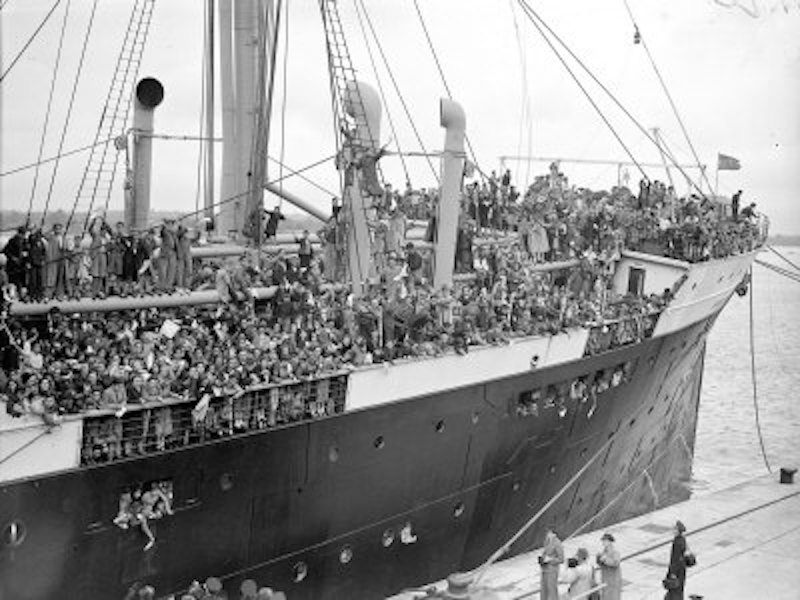On this day, May 21, in 1937, the Habana set sail from the Port of Bilbao with thousands of Basque boys and girls bound for Great Britain. They arrived on May 23.
They were hardly the only Basque children to feel our homeland to escape the swipes and swats of the Francoist insurgents. But that trip, on the Habana, with 3,840 boys and girls, 200 teachers, and 16 priests, is the iconic one, the symbol, of that diaspora of children with which the Basque Government, with the help of so many good people of the world, tried to keep them away, as far as possible, from the horrors of war.
We’ve written a lot about the Basque War Children, and we’ve always done so with our hearts clenched when imagining the suffering of so many families when having to decide to send their children far from home, or have them stay at him, within reach of the bombs and the violence of the fascist monster. We’ve also always felt gratitude at how all those people and institutions decided to help and protect those boys and girls.
The arrival of the Habana with those 4,000 refugees was the end result of an extraordinary mix of events: the Bombing of Guernica and Times journalist George L. Steer‘s description of it, and the commitment of the majority of British society, which faced up to their government’s clearly pro-fascist sympathies (order, anti-communism). That conflict, won by civil society, allowed those many Basque children to find refuge on the other side of the Bay of Biscay. A few years ago, the University of Warwick in England uploaded 13,000 pages’ worth of documents related to the Spanish Civil War and made them freely available. These documents include a large volume of photos and texts about their stay in the UK.
About the influence of the Bombing of Guernica and of Steer’s description of it, we recommend reading Nicholas Rankin‘s conference about it, which was given as part of the activities organized by an association we deeply admire: Basque Children of ’37 Association of UK.
About the role played by British civilians in getting those Basque children to the UK, there are numerous examples in our articles, tagged with “Basque War Children“, but we’d like to highlight the piece by
And of course, we cannot forget the role and truly awesome work of the Basque Government, newly constituted in the midst of war, which was able to create protective network of civilians at home and abroad.
On this day 83 years ago, 4,000 Basque refugees crossed the Bay of Biscay on the Habana, on their way to Great Britain. Many tens of thousands more would follow in their footsteps, abandoning their homeland to take refuge in Europe or the Americas. Many of them would never return, and those who did found themselves in a country oppressed by the illegal Franco regime.
They are always in our memory and our hearts. As always, this image is the best summary of what those boys and girls had to live through: a young Basque woman, upon hearing that Bilbao had been taken by the rebels, cries despondently in the arms of an English friend. You can discover the whole story here.


Last Updated on Dec 20, 2020 by About Basque Country































